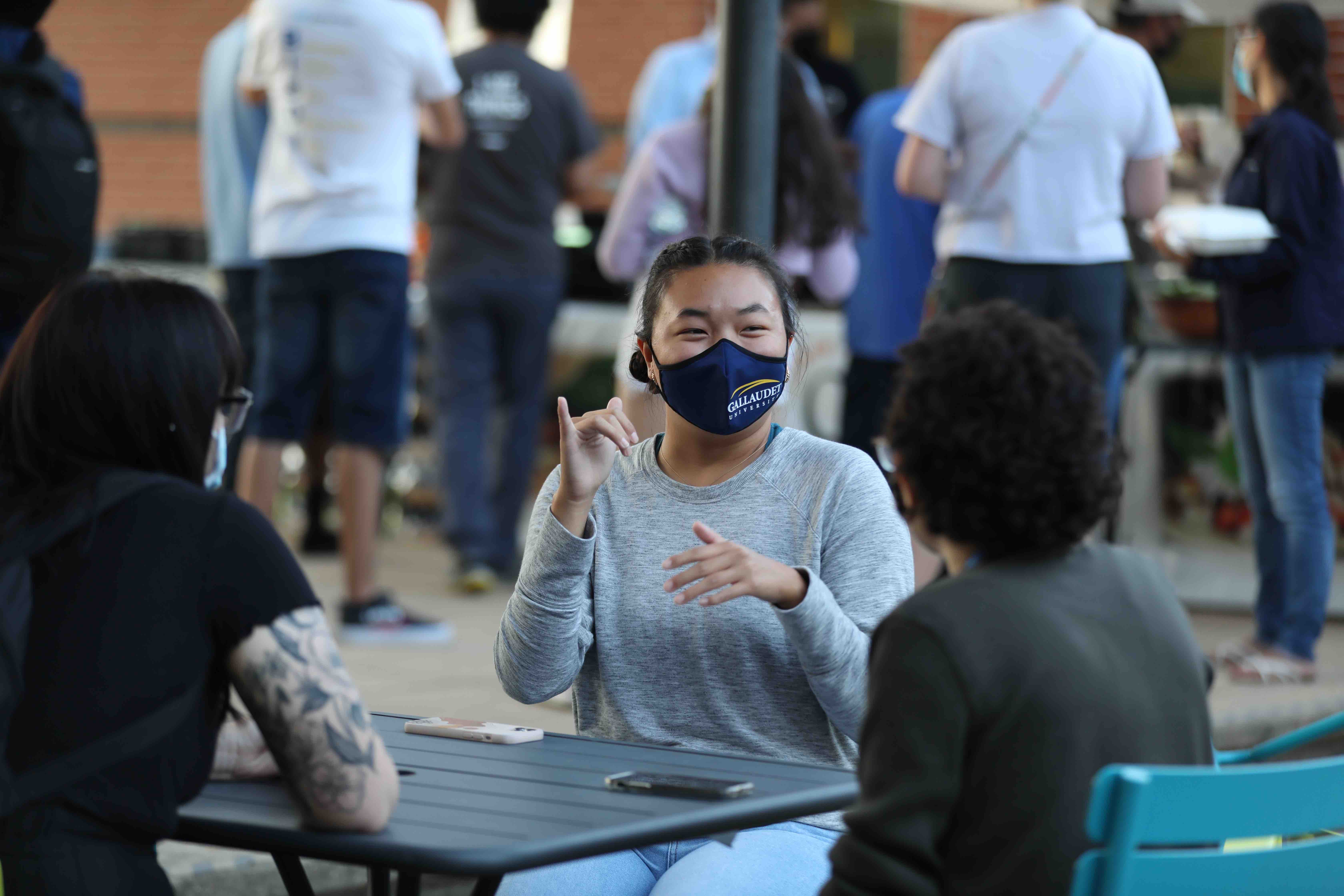
[Editor’s Note: While it’s difficult to pinpoint exactly how large the deaf population in the U.S. is, about 15 percent of adults, or 37.5 million, in the U.S. have reported difficulty hearing, according to the National Institute on Deafness and Other Communication Disorders. In honor of National Deaf Awareness Month this month, we wanted to find out what deaf communicators want others in the industry, including PR pros and journalists alike, to know. To do so, PRNEWS sat down in a virtual roundtable with Tyrone Giordano, Director of Communications, Laurent Clerc National Deaf Education Center; Chris Johnson, Manager of Community Relations, Gallaudet University; Rosa Lee Timm, CMO, Communication Service for the Deaf, Division President, CSD Social Venture Fund; and Robert Weinstock, Director of Public, Media, and Community Relations, Gallaudet University.
In a broad-reaching conversation, we discussed the impact the pandemic has had on the deaf community, the lessons learned about communicating during crises, how so-called mainstream communicators can work to make accessibility part of their DEI (Diversity, Equity and Inclusion) conversations and what corporations looking to embrace DEI and accessibility should do to push forward inclusive campaigns. ]
PRNEWS: How do you educate journalists, as well as the larger ‘mainstream’ community, about the deaf community and how they need to, and should, be communicated to?
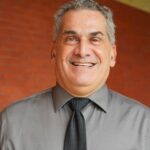
Robert Weinstock: It’s important not to focus solely on the aspect of deafness...Very often here at Gallaudet, reporters contact us because they heard a deaf person did something significant, and they focus on the fact that they are deaf as opposed to what they accomplished. So I think that’s point number one: Focus on the achievements, not on the perceived disability.
Number two: Have an understanding of the fact that we in the deaf media field may need more time to respond to your requests. We understand that reporters are often working in a fast-paced environment. But when working with deaf people, [they need to understand that] we need to have time to set up interpreters and have certain people available in order to have an interaction be successful, and it’s not always possible to have everything happen instantly, the same day.
Rosa Lee Timm: And you also have to remember that you have to secure qualified interpreters, and that the interpreters need time to prepare. Deaf professionals have preferred interpreters and/or interpreters with whom they work with often, and these choices can make the interaction much more smooth.
Christopher Johnson: Another key aspect is having the cultural competence to know your audience. For instance, to diversify your publications with the deaf community, you’re working with the Black community, Asian community, the LGBTQ+ community. It’s important to have that cultural awareness lens in the deaf community.
Tyrone Giordano: A lot of people don’t realize that the deaf community is truly a microcosm of the entire world. There are deaf people from different countries, with different identities, from different cultures. We literally are the world, but smaller.
I know that a lot of journalists seem enamored with the idea of deaf people succeeding in things because of their own internal biases. Almost like they could be amazed that I made myself a bowl of cereal, like I overcame my deafness to do that. I think it’s important to shift the framing from the individual to the context of those accomplishments, to talking about how we succeed at things in spite of systemic barriers.
Rosa Lee Timm: If I think about systemic barriers, they are an intricate part of our lives. In addition to that, we all have our own individual contexts, which are very diverse and a lot of people miss that.
Weinstock: I also think that it’s critically important not to make things “inspiration porn.” That’s something that can be seen very easily nowadays. You can pick up the latest article and it will showcase a deaf person who succeeded in doing something, and it serves as inspiration porn.
PRNEWS: DEI initiatives at organizations have been on the rise since last summer’s social justice protests. How much has accessibility been part of this conversation? How can communicators work to make it part of a larger conversation and included in part of their DEI conversations?
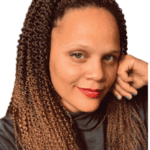
Timm: Often in the media world, time moves so quickly and stories are shared so quickly, but when we come to this work, it’s like a marathon. You’re not going to get first dibs on these stories. We deal with complex, multi-layered issues of oppression, of language.
You have deaf people, deafblind people, deaf Black people, deaf queer people, women. There are so many layers; there’s no one way to label our communities, but part of our jobs is to start to unpack that, to tell stories anywhere we can. Our stories are rich; our stories are powerful. But they are going to take time to mine through them.
You think about people who are deaf or people who have disabilities; it’s not thought to be among this concept of being diverse in our population. We think about implementing policies, and we often in that process forget about the fact that people who come from disability communities are diverse people as well. They have a diverse perspective as well.
Johnson: You mentioned diversity, equity and inclusion. I think it’s more than just that. As we noticed we have multicultural identities in our community who happen to be from Africa, Asia, Europe and many more. The point here is how can we successfully reach out. The number of organizations that we are aware of, such as the National Deaf Black Advocates, by reaching out to them and having a conversation, you can get a perspective to gain a great sense of what is happening across the United States. And then for the Latina/o/x community, we have a local chapter, Latina Deaf and Hard of Hearing Association of Metropolitan of DC Area and national organizations, Council de Manos and National Hispanic Latino Association of the Deaf, to reach out to understand what their struggles and accomplishments were like. In addition to that, there’s deafRAD, which is tied to the LGBTQIA deaf community. To be considerate of accommodating BIPOC clients, there are language translating organizations for Black interpreters, the National Alliance of Black Interpreters, and one for trilingual interpreters through Mano a Mano.
PRNEWS: What has been the greatest impact of the pandemic on the deaf community, and what lessons can the mainstream community learn about best practices for communicating during crises?
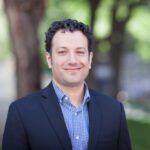
Giordano: The number of events in ASL that have become accessible has increased by far because we’re working online. Interpreters are forced to work online, and a lot of events are online, and [it has made] it easier to be much more accessible, and people in our deaf community seem to be more assertive in asking for access and what they need. It seems to be somehow less of a fight in getting these access points rather than when we’re in person...when we’re trying to figure out how we’re going to communicate.
Timm: And often we have press conferences addressing COVID, and there are interpreters there live working. More and more people are working from home; more and more people are seeing these news events with the interpreters live on the news and so we hope that people start to replicate these behaviors. We’re seeing that already; we’re seeing states start to replicate and mimic these behaviors and making sure they have sign language interpreters available at all of these major media events.
Johnson: I think there are many types of pandemics. One is racism, discrimination. But it ultimately boils down to this: I feel like there is a certain level of leverage in our community. It’s our show, and we can identify what it is that we need. I’m thinking back from 1971 to now of how technology has evolved tremendously and become more accessible for the Deaf, and there is a bevy of different kinds of interpreters out there serving our community.
Weinstock: Prior to the pandemic, people would usually ask, “can you read my lips?”...Now it’s like hearing people are unsure how to communicate once they wear a mask...Within four months of the [start of] the pandemic, Gallaudet had many different reporters reaching out asking how we’re communicating in a pandemic.
You need to figure out how to communicate, and reporters would very often assume that deaf people rely on lip reading, and that’s not the case. It’s frequent and recurring education, education, education. And we really have to keep doing that because these reporters come to [us] with preconceived assumptions, for instance, that all deaf people can lipread. Our interviews often are eye-opening for reporters; they had not considered that there are many ways to be deaf, and that deaf people often improvise in communication situations in ways that other people might never have thought about.
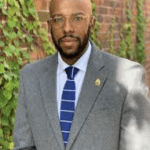
Johnson: The concept, or the notion, of being deaf varies from person to person. I am deaf, and I may prefer to use my voice, or I may prefer to sign. So that’s an appropriate question to ask of that person: do you have a preference of one language versus another? Because there are certain deaf people that are stronger in one language. By making those assumptions, you’re doing yourself a disservice. It would be better for you to ask what language preference that person has. Particularly in the Black community, through my experience, we know there is more reliance on using their voice.
PRNEWS: What do so-called mainstream PR pros get wrong? How can PR pros fix it?
Timm: I think modeling the behaviors. PR professionals showing an understanding of how to frame and write and publish stories about deaf individuals with various backgrounds. [There’s so much] diversity living within our communities. It would be nice to create a model.
People often imitate or replicate words you’re using, so use the appropriate words. People can start to mimic those words and replicate those words and start to understand how deaf people are living and breathing people. We are not just living in print. Maybe there is video to show what our community looks like. Sometimes just demonstrating interactions, behaviors is helpful.
Weinstock: There are many reporters who come to us with a lot of assumptions. Lip reading is one among many. There are several assumptions we find ourselves having to correct. When you come with these preconceived notions of who deaf people are, what they can do, most people make assumptions about what deaf people cannot do…There are times we have to take away the distractions and focus on the actual stories.
Timm: A couple of things, one is the sense of agency and ownership of what I say, what I do, during any interaction with a journalist or communicator. Oftentimes there is an overreliance on interpreters. For example, right now you are listening to an interpreter’s voice, so we have no way of knowing if the interpreters are accurate with what I’m saying. We really don’t. So the story that you’re gathering, is it truly exactly what I’ve said? Maybe. Maybe not. So then what you published may not be what I really said because of a loss of translation.
And then you’re going to see different types of oppressive language, ableist language. And then we lose that sense of agency, of power, of being able to actually communicate who we are and to disseminate our stories. It’s so important for professionals and communicators to be authentic and double check our words before it’s published. Double, double check, especially because it’s going through a translation. Let me look at it. Let me evaluate it and say whether or not it’s a good story before you publish it. Because once you publish it, it’s out of my hands and I lose ownership. You’re relying on a sign language interpreter, spoken word, as law, as opposed to what I might have really have been trying to say.
Giordano: Writers start to feel ownership that somehow the story is theirs, but really the story is nothing without us. So if they could, show us the appropriate honor and respect to make sure we’re represented appropriately and the story is published the way it should be published. So it’s really important for journalists to understand that it’s important to co-create with the sources and the author themselves.
Weinstock: Hearing-impaired is a label that is often used to associate with deaf people that I, and many other people,. take offense to. There is other terminology that may not be appropriate; it is best to check with the deaf person to be sure they are accurately described.
Timm: We might have an email request asking us to quote in a story. English is my second language. ASL is my first language, so asking me to quote something in English is maybe not going to elicit the response you’re looking for. As a deaf person, I would really like the opportunity to respond either in written English or via ASL through an interpreter so we are truly on an equal playing field. Once we start to lose that, people think we’re dumb or that we don’t know what we’re talking about. It just really needs to be equalized, that playing field.
PRNEWS: Thank you for being so candid.
Weinstock: We’re being mild here in our responses.
PRNEWS: Is there anything you can tell me about the progress you have seen over the course of your career in terms of how the industry treats the deaf community, as well as what opportunities are available to you as deaf communicators?
Weinstock: Social media has had the biggest impact by far.
Currently there’s a lot of focus on Black ASL (BASL), particularly on social media. Here at Gallaudet, there’s a faculty member, Dr. Carolyn McCaskill. She is one of the preeminent scholars on Black Deaf culture and history, and she has been researching BASL with colleagues for more than 25 years and has a large corpus of work. However, the recognition has not been commensurate with the amount of work Dr. McCaskill and her colleagues have invested. TikToker Nakia Smith (@realcaunsia), has made many posts about Black ASL and has had millions of views. As a result, she has brought more attention to BASL, especially for younger generations.
Social media creates more visibility. It brings more attention and recognition to something that otherwise may not have gotten that level of attention.
Johnson: And also you think about people who are technologically disadvantaged and the younger generations that have quite an advantage there, like the up-and-comers Nakia Smith and David Player. My advice toward relationship-building: get ‘a third eye’ on your piece to build up a stronger reliable source.
Timm: To support what Tyrone and Chris were saying, one person cannot be representative of the entire group because that’s just one perspective. It’s unfair to deem that person as representing the entire group; any time you get the perspective of one person of the community, it would behoove you to try to find other perspectives in the community because with social media…sometimes things go viral and before you know it you don’t have a handle on what you are seeing.
Giordano: Sometimes writers will cite that one deaf source and end up that their comments end up really harmful to the deaf community. It’s like you have that one Black friend who says Black people do this and it can be generalized to everyone and that’s really dangerous. And often, deaf people will internalize their own oppressions and will repeat some harmful things about themselves and deaf people in general, so you have to be really careful when you navigate that and when you publish stories to make sure you identify the right people to talk with or collect a broad number of perspectives and find the commonalities and differences among them.
PRNEWS: Let’s talk a bit about Black ASL. You’ve referenced it a couple of times. What should the larger community of communication professionals and media know specifically about Black ASL?
Johnson: I’d say, it’s my culture. It’s what I live and breathe. Being Black and deaf, being part of this culture, having the various nuances, it’s just part of who I am. Sharing a historical narrative where there was a point in time where there was segregation at schools for the deaf. There were separate schools for the black deaf and white deaf, specifically in the south. The dialect and variation of Black ASL vary from state to state, in the south, due to regional communities developing their own signs due to the segregation population. Since the desegregation took place Black American Sign Language started to fade due to code-switching and lack of corpus to preserve its language. There is a book called “The Hidden Treasure of Black ASL: Its history and structure.” Reading this book would help you better understand how, when, and how BASL was created in the first place.
Weinstock: Two things really drove the focus on Black ASL. The first was Black Lives Matter. The second was the woman on TikTok who went viral. Most of the questions I get on Black ASL were because of the TikTok star, and people wanted to find out more information, which was good. I think that drove traffic to us.
Timm: Think about the fact that we’re in America and we speak English. You know, where we’re talking about, they speak English. But it’s completely different; how you communicate, how you use words, your choice of words. So really it’s a cultural context...the same thing is going to be true with American Sign Language. You’ll see variations between Black ASL and white or American ASL … in American ASL you’ll see a lot of mixture of dialects but in Black ASL you’ll see a much purer dialect because the Black culture is involved and included in the way that we start to communicate in the Black deaf community. #BLM was also able to bring that to the forefront in terms of our history and how rich it is and how rich the language is.
PRNEWS: We’re about out of time. What have I not asked that I should have?
Weinstock: There are not many deaf PR professionals. There are a few, as you can see here in this Zoom meeting: Rosa Lee, Chris, Tyrone and myself. But if we’re talking about generally in these hearing firms, you don’t see many deaf PR professionals. And I can say the same about journalism. There are not many deaf journalists out there…and I think that’s an issue that has to be addressed. Between schools, organizations, corporations, that idea of having more deaf talent.
Giordano: I also wanted to add to there’s a younger wave of people. I don’t know if we want to talk about generations of people but our young people who are in their 20 or 30s are really pushing hard right now and publishing in major publications, [such as] Sara Novic or Ross Showalter. It’s true that these are mostly white voices, but they can push through and bring more deaf people of color in who are writing. We need to see more diversity of writers in these communities getting published and even co-writing with hearing authors writing about deaf people. Opportunities to bring people into the journalism business would be incredible.
PRNEWS: What should corporations think about if they are looking to hire deaf communicators or deaf journalists? What should they proactively be doing?
Weinstock: You need to have someone who is willing to be assertive and to put themselves out there. At the Gallaudet Communication Studies program, I have seen many Black deaf students, Asian students, graduate from the program but their faces aren’t being shown. They have to go out to the organizations and have internship opportunities. Internships would be a great way to bring in some of these deaf professionals.
Timm: More and more companies and corporations are thinking more about diversity and quotas and making sure there is a balance in their workforce. Yet they still forget we are a part of that community, of being deaf, of having a disability. So if there could be more efforts to include those of us in the deaf communities or people who identify as being disabled and making that a part of organizations’ growth in terms of diversity. I think that is often where organizations struggle - with the how, how to partner. Partner with us, partner with Gallaudet. There are a lot of resources; we have warm living breathing bodies to support this work.
PRNEWS: What’s the biggest thing that a corporation looking to really embrace DEI and accessibility can do, beyond internships? To reach deaf people in their campaigns, to push forward inclusive campaigns?
Giordano:Let us lead. Don’t just use us in a story or bring us on only as a consultant or subject matter expert. You have the power to publish. Let us co-create and take the lead with you in telling our stories, or even co-write with us. We know our own stories best. We know where to get first-hand sources for those stories. We can even write about things not related to deaf topics. I promise you, our takes and perspectives on things sometimes are more interesting than the usual.
Weinstock: I’ve been in PR for a number of years and the level of knowledge I have is on par with others in the field for just as long. But in my role at Gallaudet, I’m in a higher leadership position and I’m not sure that would be the case at a hearing corporation or hearing firm. So just have that in mind, that there are deaf people who are equally skilled and adept and have the same amount of knowledge as their hearing counterparts. There should be opportunities to actively recruit some of these individuals.
Tips for Publishing a Story on People who are Deaf
- Use "people who are deaf and hard of hearing” or “deaf and hard of hearing people” when referring to deaf people, not “hearing impaired.” Deaf people do not consider themselves impaired. Other euphemisms (hearing deficit, hearing loss, hearing challenged, etc.) similarly are considered offensive.
- While it is fine to use “deaf people” to collectively refer to “deaf and hard of hearing people,” it is not appropriate to use “hard of hearing people” as a catch-all.
- Do not use “the deaf” or “the deaf and hard of hearing” – that is, do not make these attributes into nouns. Use "people who are deaf and hard of hearing” or “deaf and hard of hearing people.
- Never use “deaf-mute,” “mute,” “deaf and dumb” or other archaic terms.
- Bear in mind that the deaf community is not monolithic. Some deaf people sign, some deaf people use Black American Sign Language (BASL), others use American Sign Language (ASL), some deaf people have cochlear implants, some deaf people voice for themselves, and there are hundreds of different sign languages around the world.
- Your story about the deaf community should not be about how “cool” it is to see an interpreter (a hearing person) signing at a music concert or a press conference.
- The word Deaf, with a capital D, largely refers to deaf people who identify with the deaf community. They typically use sign language, observe the cultural norms of the community, and have attended residential schools for deaf students. The lowercase “deaf” is a more all-inclusive description. If you interview deaf people, it is best to ask each of them how they would like to be identified.
- Do not describe deaf people as having “lost” something or as “those who cannot hear.” These phrases reinforce the misperception that the ability to hear is the “norm” and that deaf people are “less than.”
- When interviewing a hearing person about deaf people/deaf issues, do not report that the hearing person “speaks for” deaf individuals, including the interpreter.
- When interviewing a deaf person, do not report as “interviewed or responded through an interpreter.” Simply quote them as you would do for hearing people. The interpreter is not part of the interview or the story.
- People who are deaf are no less capable. Their situation/accomplishments/success should not be positioned as “sad,” to evoke “pity,” or “inspirational” to others or as a “surprise” that a deaf person is capable of doing something. In particular, do not position the deaf person as having overcome obstacles, or having succeeded in spite of being deaf.
- ASL (American Sign Language) and BASL (Black ASL), should not be abbreviated with periods. The correct abbreviations are ASL and BASL.
- ASL and BASL are visual-gestural languages with their own syntax and grammar, no different than French, German, etc. They are not “translations” of English or any other spoken language.
